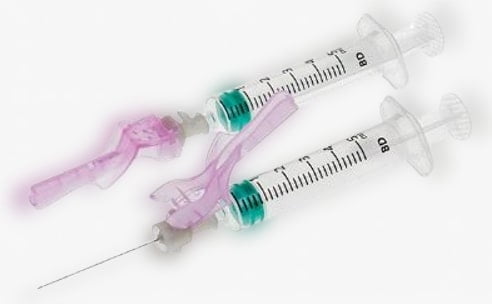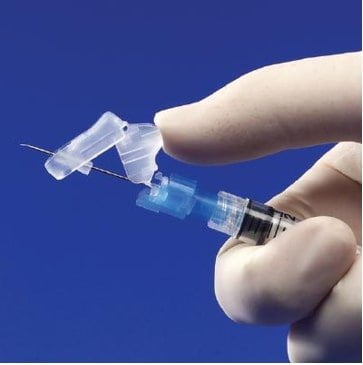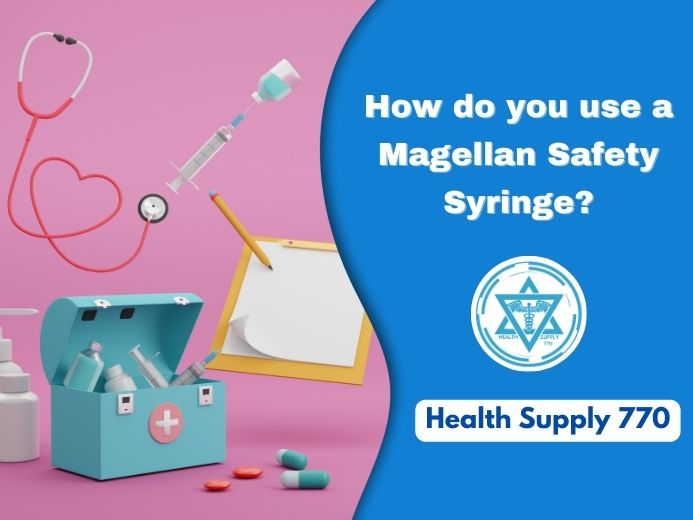Syringes are sharp medical devices used to inject medications into or withdraw fluids from the human body. With various products available in the market, the Magellan safety syringe stands out as a prominent choice. There are many types of syringes, but safety syringes, especially the Magellan variant, are becoming increasingly popular among healthcare professionals due to the numerous benefits they offer. In this article, we’ll delve into the proper usage and advantages of the Magellan safety syringe.
What are safety syringes?

People who regularly use syringes are always at a higher risk of accidentally sticking themselves with a contaminated needle. A contaminated needle might cause the transfer of several infections and diseases including:
• Hepatitis C
• Syphilis
• Rocky Mountain spotted fever
• Varicella zoster virus, which causes chickenpox and shingles
• Epstein-Barr, a type of herpes virus
For this reason, it is important to use syringes that have a lower risk of accidental injury to save people from accidentally sticking themselves with contaminated needles and exposure to bloodborne pathogens. One solution to this problem might be to use safe needles for injections.
A safety syringe is a type of syringe that helps to avoid accidental needle stick injuries. It is done with the help of a mechanism that helps to avoid accidental stick injuries. The needle of the safety syringe might be attached permanently or detachable. A safe syringe also requires less effort than traditional needles.
Accidental needle stick injuries can be fatal as the needles are contaminated and might cause serious infection or disease. As per the Centers for Disease Control and Prevention (CDC), almost 385,000 healthcare workers accidentally stick themselves with contaminated needles every year.
Types of safety syringes

Safety syringes protect the person using syringes with the help of a needle retraction mechanism. This retraction mechanism can either be automatic or manual and prevents accidental needle stick injury and syringe reuse. In the case of automatic retraction of the needle, the needle retracts into the syringe’s body when the plunger is released while in the manual mechanism of needle retraction, the user manually retracts the needle into the body of the syringe. Some safety needles might not have any retraction mechanism at all. There are three common types of safety syringes which are described below:
• Luer-Lok syringes
A Leur-Lok syringe secures the needle into the syringe’s barrel with the help of a locking mechanism.
• Luer-Slip syringes
A Luer-Slip syringe includes a loose fitting between the syringe barrel and needle.
• Eccentric syringes
The eccentric syringes have the needle offset from the syringe barrel.
How to use a Magellan safety syringe?
The Magellan safety needles are available in several sizes. These safety needles provide the best way to protect healthcare workers and other staff from accidental needle injuries and their consequent complications. The procedure to use a Magellan safety syringe is as follows.

• First of all, gather all the necessary supplies according to the facility’s protocol.
• To open the safety syringe, you need to locate the ISO color-coded stripe on the back of the package. Now carefully open the packaging and remove the syringe.
• Now remove the protective needle sheath and drop it on a flat surface.
• In case of using a safety syringe with a needle, hold the needle sheath and twist the syringe clockwise to fully seat the needle. It will secure the needle.
• In the case of using a separate needle, attach the needle to the syringe.
• Now to draw the medication from the vial stopper, insert the needle into the center of the vial stopper.
• The failure to draw medication will cause the needle to be damage.
• After drawing the medication from the vial, you may scoop the sheath back into its place using the one-handed recapping method.
• Now carefully aim the needle cannula into the sheath.
• After carefully placing the needle cannula into the sheath, scoop and clip the sheath back into place and ensure that your hand is behind the needle at all times.
• Now prepare the site of the injection and remove the Magellan safety needle protection sheath.
• Now give an injection according to your facility’s protocol.
• There are three methods to activate the Magellan safety needle. You can use your thumb, finger, or a flat surface to activate the safety needle.
• To activate the needle using your thumb, you need to gently push forward on the safety device. A click will verify that the safety device has been activated to a locked position.
• To activate the needle using your finger, you will need to gently push forward on the safety device. A click will verify that the safety device has been activated to a locked position.
• To activate using a flat surface, you only need to turn the needle and syringe upside down. With the help of the same hand, place the safety sheath against the flat surface and gently push down and drive the syringe in a backward motion till you hear a click which verifies that the safety device has been activated.
• Once the safety device has been activated and is in the locked position, you will notice that the needle tip and cannula will be completely encased.
• Now immediately dispose of the needle and syringe in a sharps disposal container.
Conclusion
Syringes and needles are vital medical tools for injecting medication or withdrawing fluid from the body. Healthcare professionals, especially nurses, are at risk of accidental needle sticks, potentially transmitting diseases. Safety syringes, like the Magellan, offer mechanisms to shield the needle before and after use, safeguarding healthcare workers from potential harm. Utilizing these syringes is crucial for protection and can be lifesaving.

PhD Scholar (Pharmaceutics), MPhil (Pharmaceutics), Pharm D, B. Sc.
Uzma Zafar is a dedicated and highly motivated pharmaceutical professional currently pursuing her PhD in Pharmaceutics at the Punjab University College of Pharmacy, University of the Punjab. With a comprehensive academic and research background, Uzma has consistently excelled in her studies, securing first division throughout her educational journey.
Uzma’s passion for the pharmaceutical field is evident from her active engagement during her Doctor of Pharmacy (Pharm.D) program, where she not only mastered industrial techniques and clinical case studies but also delved into marketing strategies and management skills.
Throughout her career, Uzma has actively contributed to the pharmaceutical sciences, with specific research on suspension formulation and Hepatitis C risk factors and side effects. Additionally, Uzma has lent her expertise to review and fact-check articles for the Health Supply 770 blog, ensuring the accuracy and reliability of the information presented.
As she continues her PhD, expected to complete in 2025, Uzma is eager to contribute further to the field by combining her deep knowledge of pharmaceutics with real-world applications to meet global professional standards and challenges.








